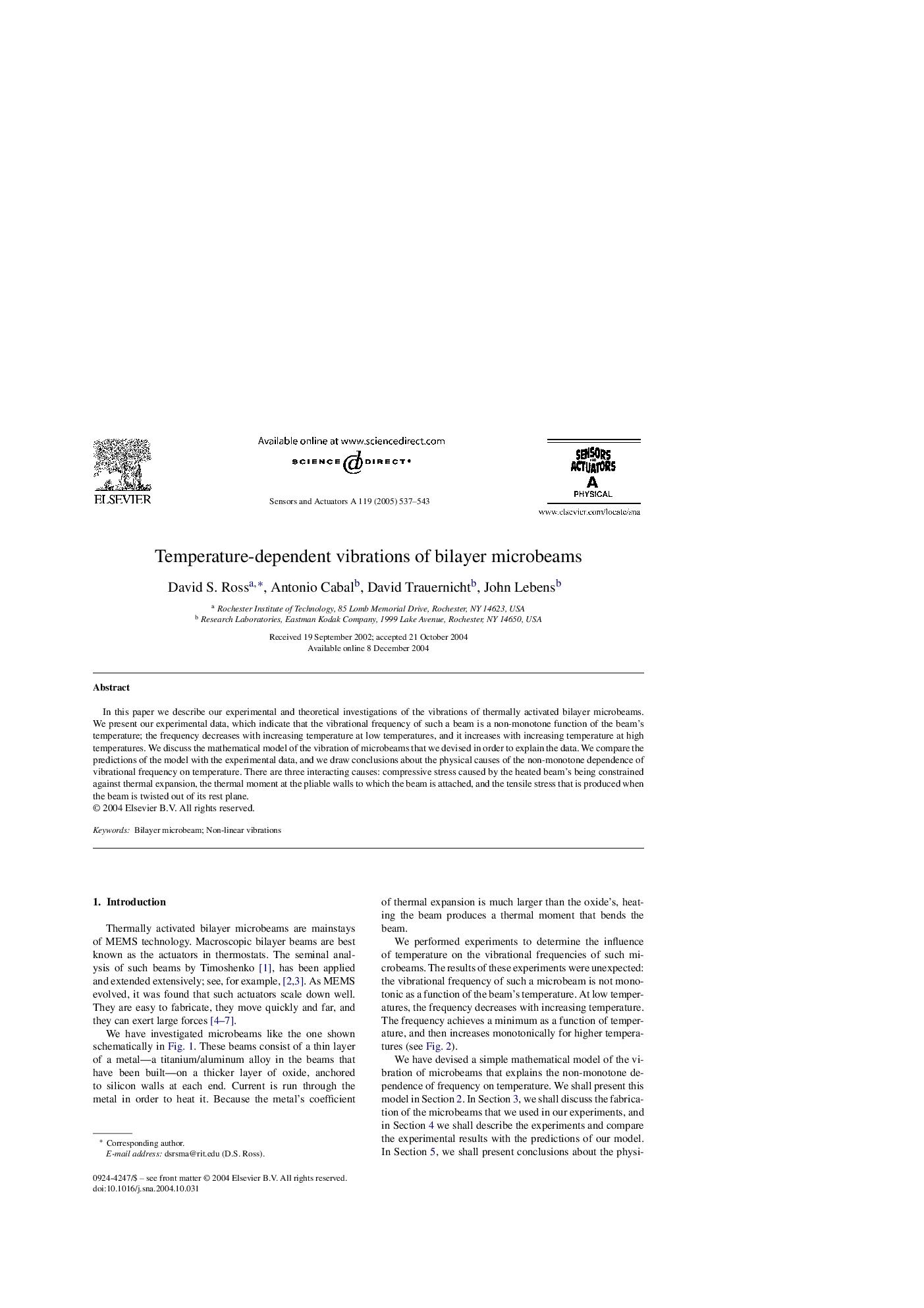| Article ID | Journal | Published Year | Pages | File Type |
|---|---|---|---|---|
| 10409673 | Sensors and Actuators A: Physical | 2005 | 7 Pages |
Abstract
In this paper we describe our experimental and theoretical investigations of the vibrations of thermally activated bilayer microbeams. We present our experimental data, which indicate that the vibrational frequency of such a beam is a non-monotone function of the beam's temperature; the frequency decreases with increasing temperature at low temperatures, and it increases with increasing temperature at high temperatures. We discuss the mathematical model of the vibration of microbeams that we devised in order to explain the data. We compare the predictions of the model with the experimental data, and we draw conclusions about the physical causes of the non-monotone dependence of vibrational frequency on temperature. There are three interacting causes: compressive stress caused by the heated beam's being constrained against thermal expansion, the thermal moment at the pliable walls to which the beam is attached, and the tensile stress that is produced when the beam is twisted out of its rest plane.
Keywords
Related Topics
Physical Sciences and Engineering
Chemistry
Electrochemistry
Authors
David S. Ross, Antonio Cabal, David Trauernicht, John Lebens,
